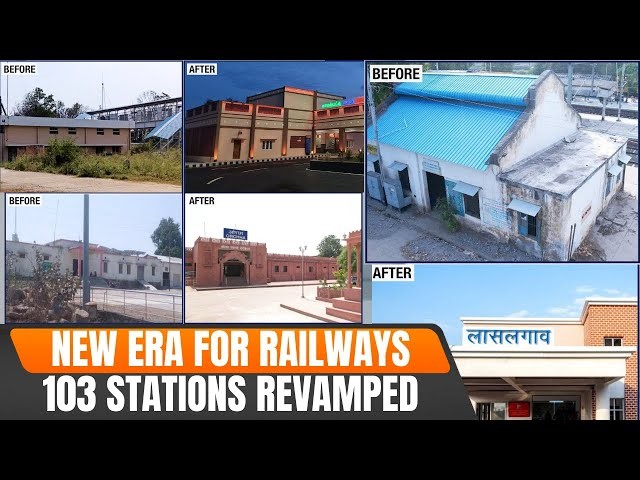PM Modi Inaugurates 103 Amrit Bharat Railway Stations
PM Modi Inaugurates 103 Amrit Bharat Railway Stations
Why in the News ?
Prime Minister Narendra Modi inaugurated 103 Amrit Bharat railway stations across 18 States and UTs, aiming to enhance passenger experience, promote heritage, and boost tourism. The initiative is part of the larger Amrit Bharat Station Scheme (ABSS).
Launch Highlights and Development Focus:
- PM Narendra Modi inaugurated 103 Amrit Bharat railway stations via video conference from Bikaner, Rajasthan.
- The stations span 86 districts in 18 States and Union Territories, developed at a cost of over ₹1,100 crore.
- A new train from Bikaner to Mumbai was also flagged off.
- The stations are part of a broader initiative to modernize over 1,300 stations under the Amrit Bharat Station Scheme.
Cultural Heritage and Tourism Promotion
- Modi emphasized that the modernised stations showcase local art, heritage, and religious traditions:
○ Mandalgarh (Rajasthan) reflects Rajput grandeur.
○ Thawe (Bihar) features Madhubani art and Maa Thawewali.
○ Orchha (MP) embodies devotion to Lord Ram.
○ Srirangam (TN) echoes the Ranganathaswamy temple.
○ Dakor (Gujarat) pays tribute to Ranchhodrai ji.
○ Tiruvannamalai reflects Dravidian architecture, and Begumpet showcases the Kakatiya dynasty.
- These stations aim to attract tourists and generate employment.
Modernisation and Connectivity Push
- Modi underlined India’s railway transformation, citing Vande Bharat, Amrit Bharat, and Namo Bharat trains.
- 70+ Vande Bharat routes now connect remote regions.
- In Rajasthan alone, nearly ₹10,000 crore will be invested in railway infrastructure this year.
- Over the last 11 years, 34,000 km of new railway tracks were laid, with extensive road-rail bridge construction.
Amrit Bharat Station Scheme – Background |
| ● Launched by Indian Railways to redevelop 1,300+ railway stations across the country. |
| ● Aims to transform stations into modern, efficient, and passenger-friendly hubs. |
| ● Focuses on integrating modern amenities (e.g., improved platforms, waiting areas, digital signage) with the local cultural and architectural identity. |
| ● Designed to accommodate future growth in passenger traffic and enhance operational efficiency. |
| ● Promotes multi-modal integration, sustainability, and universal accessibility. |
| ● Seeks to act as a catalyst for regional development, tourism, and employment generation. |
| ● Aligns with the broader vision of railway modernization and heritage preservation. |




